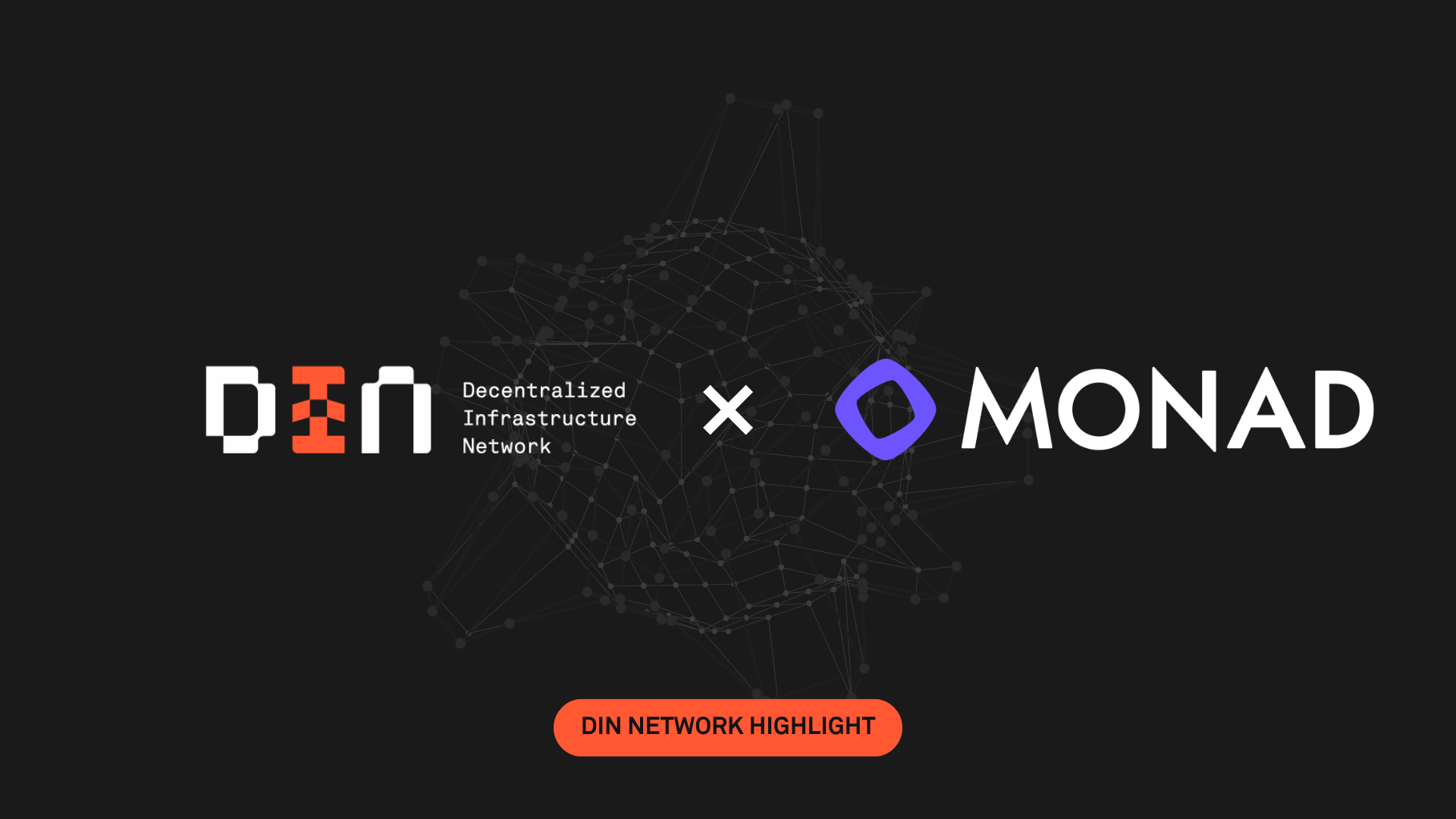[DIN Highlight] Monad
Monad Network Spotlight: A New Era for High-Performance EVM
1. Origin Story
Monad was founded on a simple insight: Web3 applications deserve Web2 speed. In 2024, a team of engineers from high-frequency trading, blockchain security, and Ethereum research (led by Keone Hon and Eunice Giarta) set out to solve one of blockchain’s biggest challenges: performance without compromise.
Backed by Paradigm and other top investors, Monad Labs raised $225 million to build a network capable of scaling Ethereum’s developer experience to global throughput. Their mission, as stated in the “Monad’s Mission: Why Monad?” post, is clear: “to power a new world economy with best-in-class technology, a frictionless developer experience, and global reach.”
After more than a year of testnet performance testing and community programs, Monad mainnet opened to the public on November 24, 2025. This marks one of the most anticipated Layer-1 launches of the year.
2. Tech Stack
Under the hood, Monad is an EVM-compatible Layer 1 designed for high throughput, parallel execution, and sub-second finality.
Key components include:
MonadBFT – a pipelined Byzantine Fault Tolerant consensus protocol achieving ~400 ms block times and ~0.8 s finality, even under high load.
MonadDB – a purpose-built state database enabling concurrent reads/writes for thousands of transactions.
Optimistic parallel execution – similar to CPU instruction pipelining, allowing the chain to process independent transactions simultaneously.
JIT (Just-In-Time) compilation – accelerates EVM bytecode execution by compiling hot paths on demand.
The result? A network targeting ~10,000 TPS while remaining fully compatible with Ethereum’s tooling and opcodes. Developers can deploy existing contracts directly—no forks, wrappers, or re-writes required.
3. Feature Spotlight
Monad’s design unlocks several first-class advantages for developers:
⚡ Speed at scale: Blocks every 400 ms, near-instant confirmations, and Web2-level responsiveness.
🧠 EVM you already know: Full Solidity/Vyper compatibility, Hardhat/Foundry support, and standard JSON-RPC.
🧩 Deterministic parallelism: Monad’s architecture maintains deterministic results while executing multiple transactions concurrently.
🔐 Decentralization preserved: Validator participation scales with performance; no reliance on centralized sequencers.
💰 Low-cost transactions: Efficient computation and storage pipelines drastically reduce gas fees.
4. Ecosystem Overview
In testnet and early builder phases, Monad’s ecosystem has exploded with interest. More than 300 teams have joined programs such as Monad Madness, Mach Accelerator, and the Builder Residency, experimenting with DeFi protocols, on-chain games, and AI-enabled agents.
The mainnet launch will introduce the MON token (for gas and staking) and a growing roster of infrastructure partners, wallets, and tooling providers.
From DeFi giants like SushiSwap and LayerZero to new primitives such as high-frequency DEX engines and prediction markets, Monad’s low-latency design is attracting projects that need millisecond-level responsiveness.
5. Why DIN + Infura
Performance means little without reliable infrastructure. Monad’s integration with Infura and the Decentralized Infrastructure Network (DIN) provides globally distributed, verifiable RPC endpoints from day one.
For developers, this means:
High uptime: Requests are automatically routed across independent DIN providers.
Low latency: Geo-optimized routing delivers sub-200 ms RPC responses worldwide.
Censorship resistance: Decentralized monitoring and EigenLayer-secured Watchers verify accuracy and availability.
Accessing Monad through Infura feels identical to using Ethereum, except now you’re powered by decentralized, fault-tolerant infrastructure designed for the next generation of high-throughput applications.
6. Roadmap & Governance
The Monad roadmap centers on progressive decentralization and developer empowerment:
2025: Mainnet launch (Nov 24) with ~150 validators, MON gas and staking, and ecosystem incentives.
2026: Introduction of on-chain governance, validator expansion, and fee markets for parallel execution scheduling.
Beyond: Open-sourcing additional components (MonadDB, JIT engine), integrating cross-L1 bridges, and expanding research into verifiable parallelism proofs.
Governance will gradually transition to the community, with validator staking, proposal submission, and on-chain upgrades guided by MON holders.
7. Community & Builder Programs
Monad is more than a protocol—it’s a developer movement. Join the community:
Website: monad.xyz
Docs: docs.monad.xyz
GitHub: github.com/monad-developers
Twitter/X: @monad_xyz
Definitive List of official links: docs.monad.xyz/official-links


